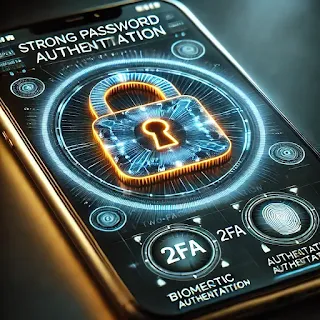Cyber Security Tips N Tricks describes various tips and tricks about cyber security, safe surfing, ethical hacking, network security, Internet, news related to software, hacking, security breaches, vulnerabilities, phishing, google, yahoo, CERT, US CERT, security agencies, etc.
Thursday, February 27, 2025
Understanding Identity Theft and Advanced Techniques for Identity Theft Protection
Tuesday, February 25, 2025
5 Essential Tips from Google to Detect and Avoid Online Scams
5 Essential Tips from Google to Detect and Avoid Online Scams
The internet has become an integral part of our lives, making everyday tasks like shopping, banking, and communication more convenient. However, with this convenience comes a growing risk of online scams. Cybercriminals use sophisticated techniques to trick users into sharing personal information, stealing money, or compromising security. To help users stay safe, Google provides essential guidelines to detect and avoid online scams. Here are five crucial tips to protect yourself from cyber threats.
1. Verify the Sender Before Clicking on Links
Phishing emails and fake messages are among the most common online scams. Cybercriminals often send emails that appear to come from trusted companies like banks, social media platforms, or online retailers. These messages typically contain malicious links or attachments that steal personal information.
How to Stay Safe:
Check the sender’s email address carefully; scammers often use addresses that resemble official ones but have slight variations.
Hover over links before clicking to see where they lead. If the URL looks suspicious or doesn’t match the sender’s website, do not click.
Avoid opening unexpected attachments, even if they seem to come from someone you know.
When in doubt, visit the official website directly instead of clicking on links in emails.
2. Use Strong and Unique Passwords
Many online scams involve hackers attempting to access accounts using stolen or weak passwords. A strong password can significantly reduce the risk of unauthorized access to your personal information.
How to Stay Safe:
Use a mix of uppercase and lowercase letters, numbers, and special characters in your passwords.
Avoid using common words, names, or easily guessable phrases.
Use a password manager to generate and store complex passwords securely.
Enable two-factor authentication (2FA) for an extra layer of security.
3. Be Wary of Unbelievable Offers and Requests for Personal Information
Scammers often lure victims by offering fake prizes, huge discounts, or urgent financial requests. If an offer seems too good to be true, it probably is.
How to Stay Safe:
Be skeptical of messages claiming you have won a contest you never entered.
Avoid providing personal or financial details to unsolicited requests.
Research companies and verify promotions on their official websites before taking action.
Report suspicious messages or ads to Google using the “Report phishing” option in Gmail.
4. Keep Your Software and Security Tools Updated
Outdated software can have security vulnerabilities that scammers exploit. Keeping your devices updated is crucial to protect against cyber threats.
How to Stay Safe:
Regularly update your operating system, web browser, and applications.
Use trusted antivirus and anti-malware software to detect and remove threats.
Enable automatic updates to ensure you receive the latest security patches.
Install browser extensions like Google Safe Browsing, which warns you about unsafe websites.
5. Verify Website Security Before Entering Sensitive Information
Fake websites are designed to look legitimate and trick users into entering login credentials, credit card details, or personal data. Identifying secure websites can prevent scams.
How to Stay Safe:
Check for “https://” in the URL, which indicates a secure connection.
Look for a padlock icon in the address bar before entering sensitive details.
Avoid entering personal data on websites with security warnings or those that look poorly designed.
Use Google’s Safe Browsing tool to check if a site is safe.
Final Thoughts
Cybercriminals are constantly evolving their tactics, making it essential for users to stay vigilant. By following Google’s expert tips—verifying senders, using strong passwords, avoiding too-good-to-be-true offers, keeping software updated, and checking website security—you can significantly reduce your risk of falling victim to online scams. Stay alert and prioritize your digital safety to enjoy a more secure online experience.













